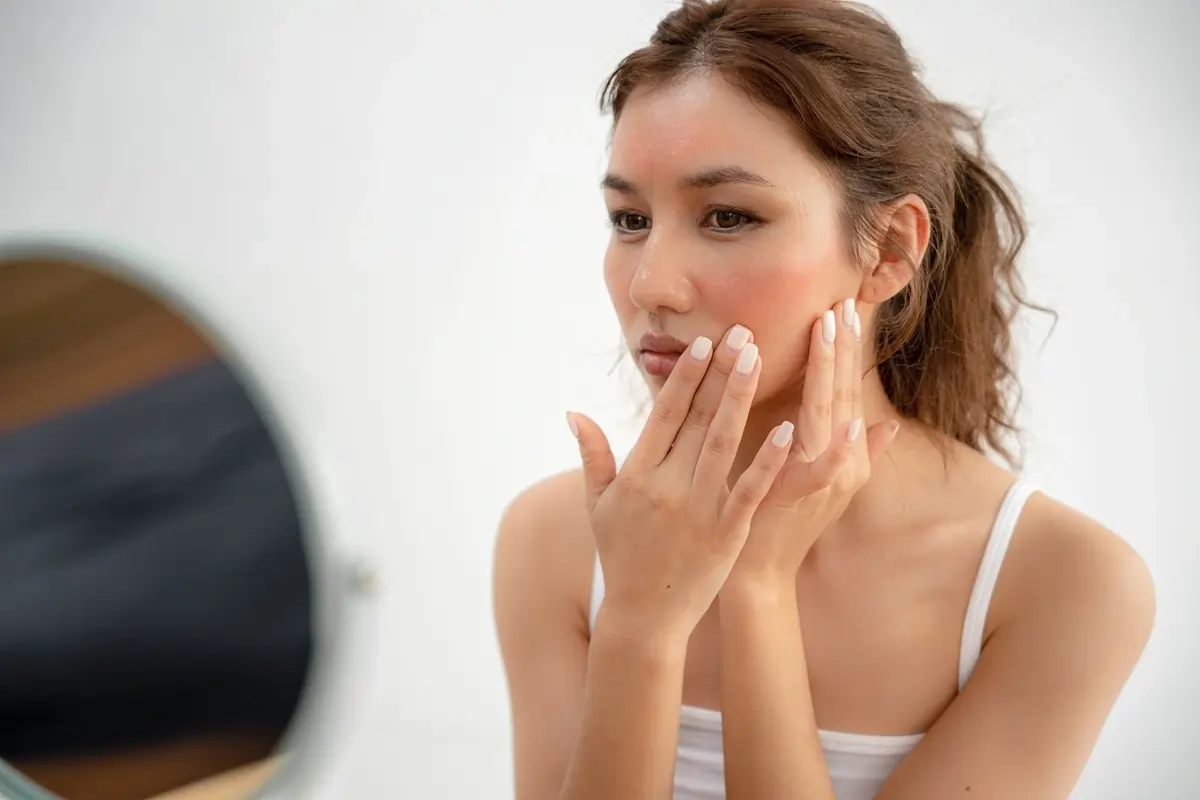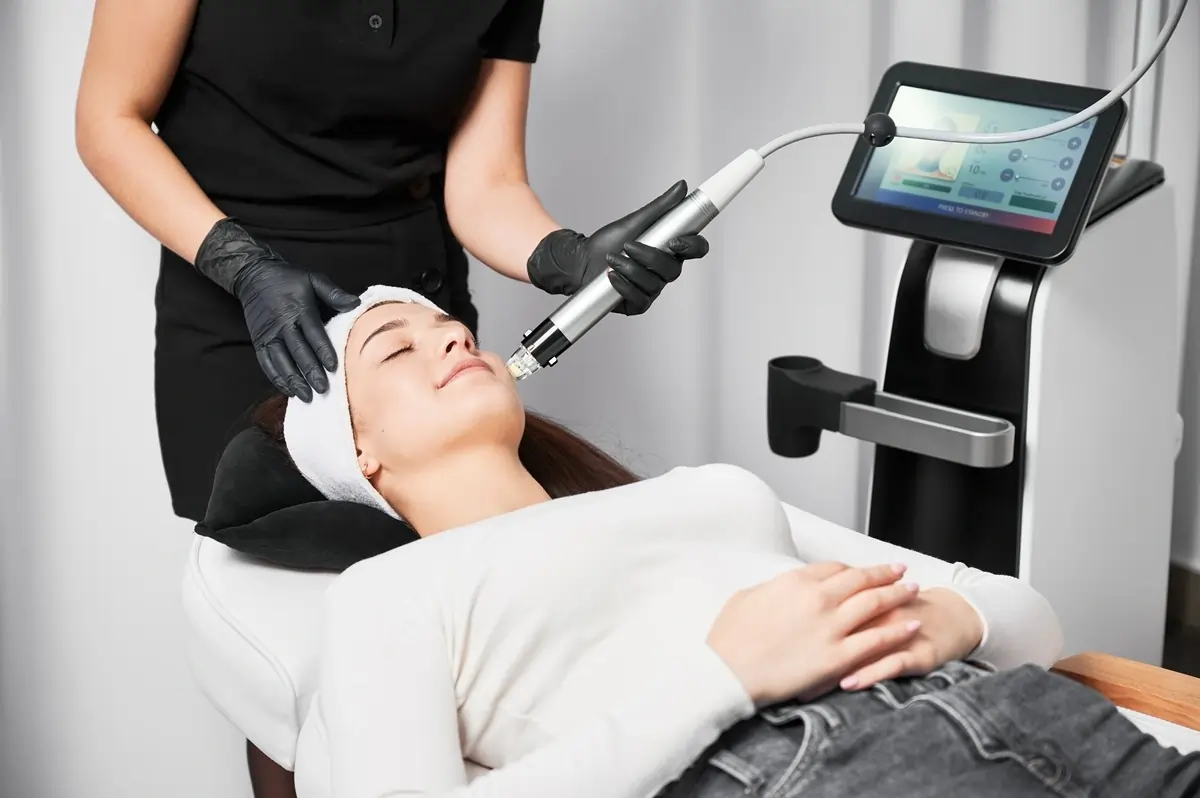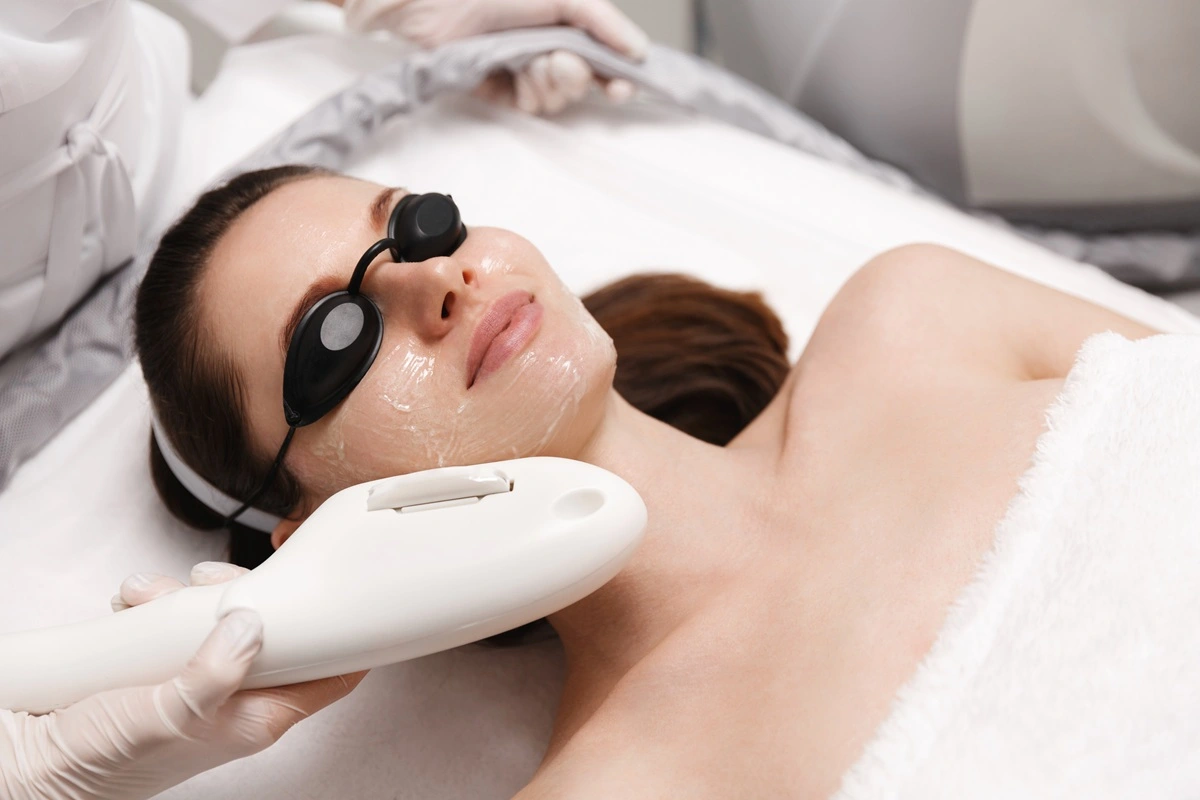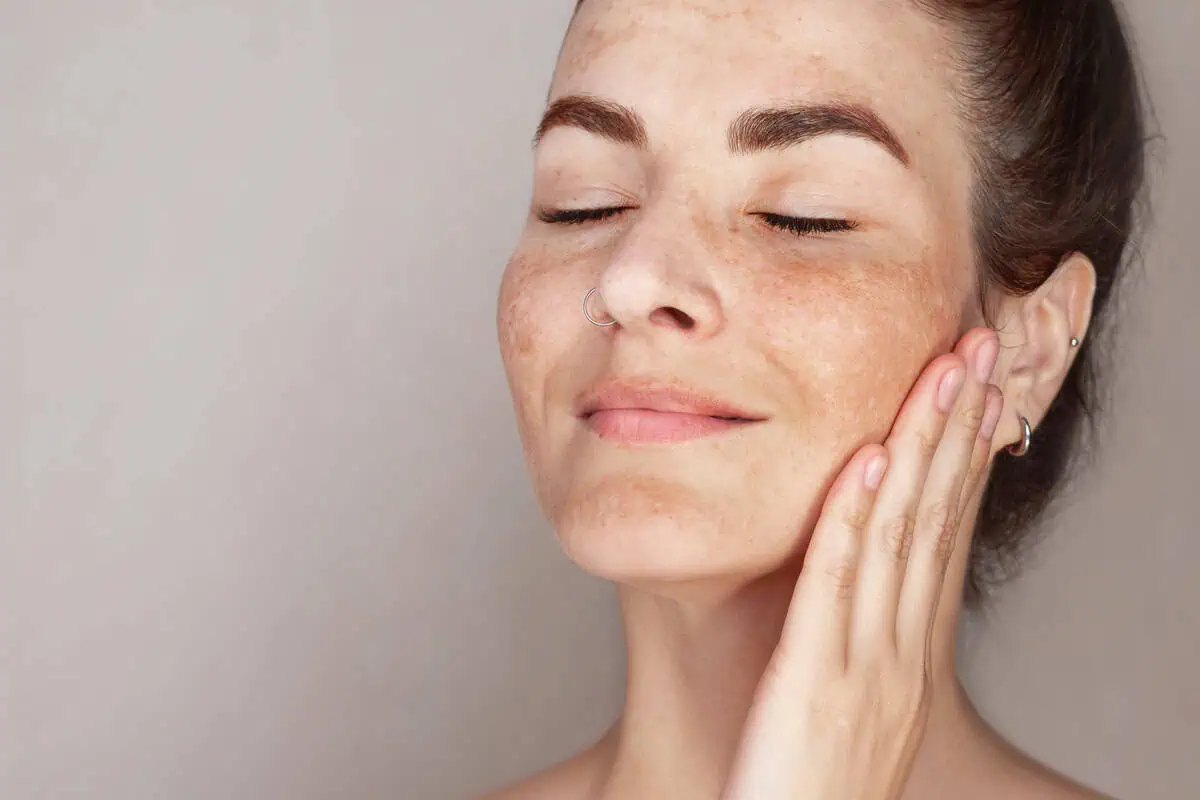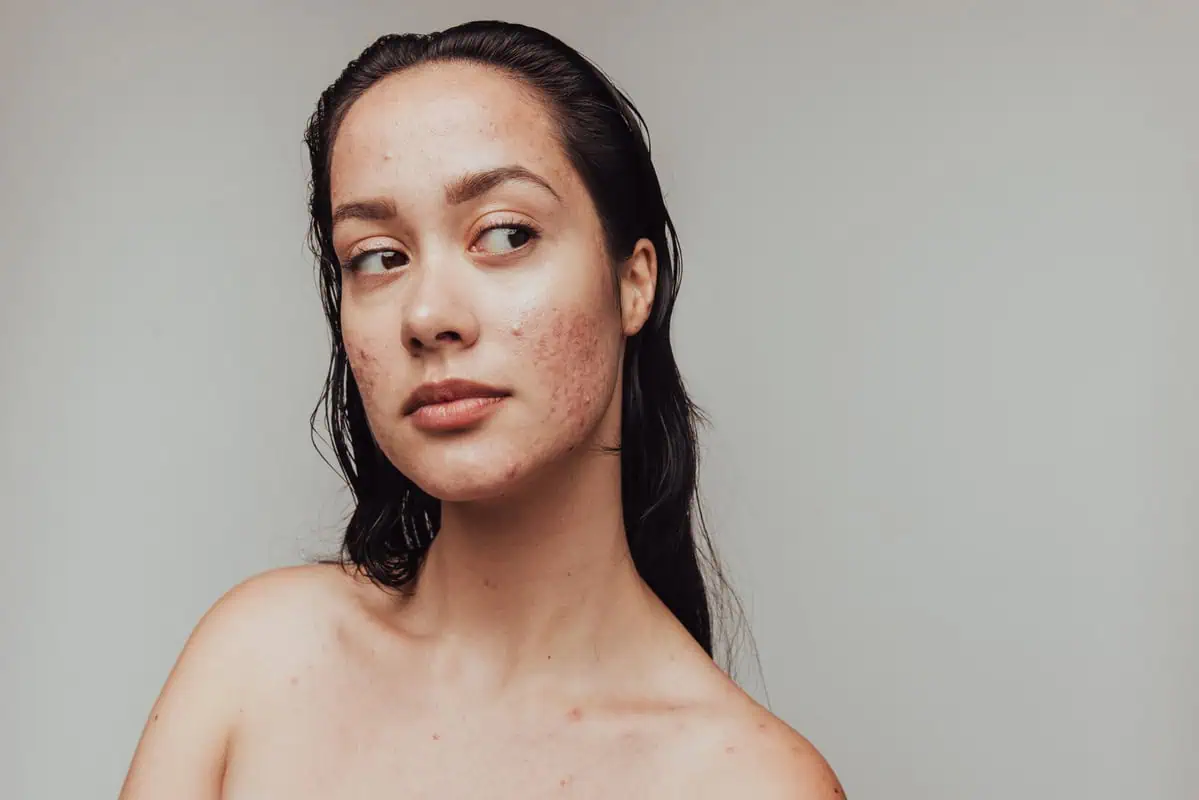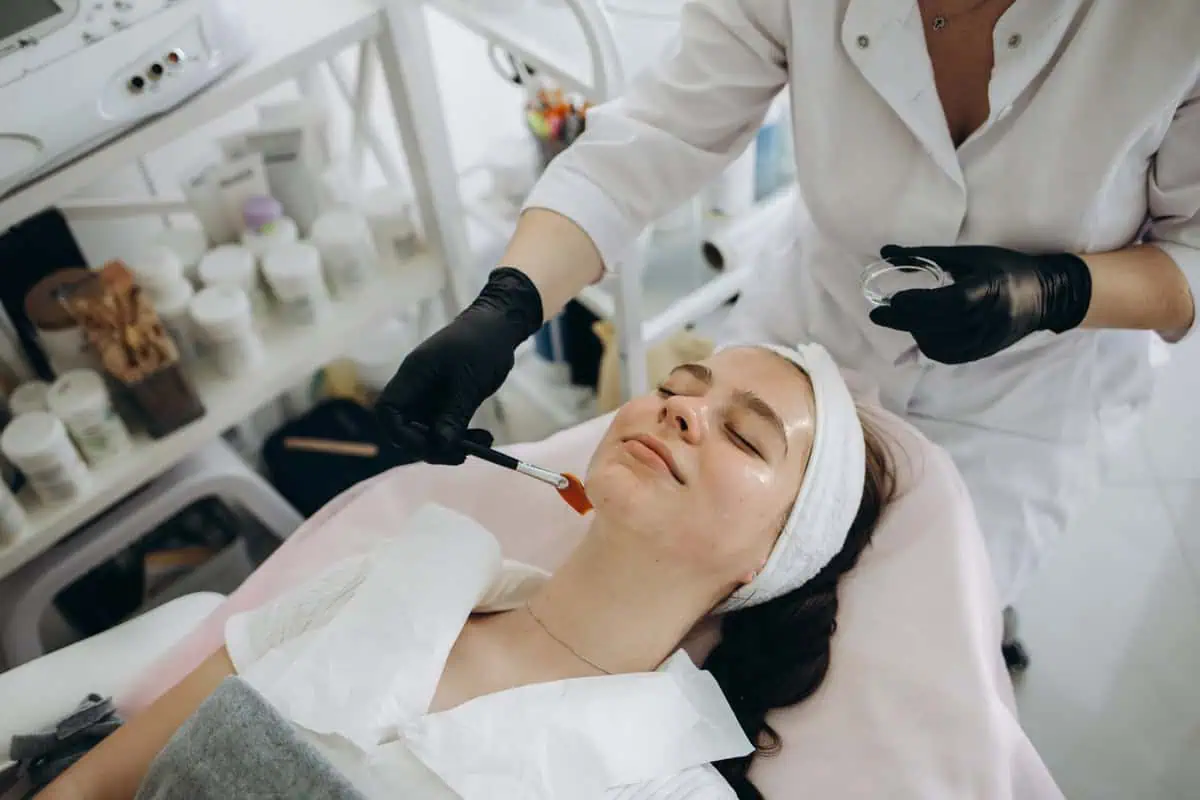Introduction
Millions of individuals worldwide suffer from rosacea, a common skin condition that is sometimes overlooked. Characterized by redness, flushing, and occasionally acne-like bumps, rosacea can have a significant impact on one’s self-esteem and quality of life. Let’s shed light on the signs and symptoms of rosacea and explore the various treatment options available to manage this chronic skin condition effectively.
What is Rosacea?
Rosacea is a chronic skin condition mostly affecting the face. It usually appears after the age of thirty and is more common in persons with fair complexion, though it can afflict anyone with any type of skin. Although the precise cause of rosacea is uncertain, a hereditary and environmental component combination is believed to be responsible.
Signs and Symptoms of Rosacea
This chronic skin concern can be recognized by distinct indications and manifestations that may vary in intensity and manifestation among individuals. Here are some of the common signs and symptoms:
- Facial Redness: One of the most recognizable signs of rosacea is persistent redness in the central part of the face, especially the cheeks, nose, chin, and forehead. This redness can resemble a blush or sunburn that doesn’t go away.
- Visible Blood Vessels: Small blood vessels (spider veins) on the nose and cheeks often become visible. These are also known as telangiectasias.
- Acne-Like Breakouts: Many people with rosacea experience breakouts that look similar to acne. These may include red bumps (papules) and pus-filled pimples (pustules).
- Skin Thickening: Over time, rosacea can cause the skin to thicken, especially around the nose. This condition, known as rhinophyma, is more common in men.
- Eye Irritation: Ocular rosacea, a subtype, affects the eyes, leading to symptoms like red, irritated, or watery eyes, swollen eyelids, and a sensation of having something in the eyes.
- Sensitive Skin: The skin may become very sensitive, with burning, stinging, or itching sensations. It may also react strongly to skincare products or cosmetics.
- Dry, Rough Skin: The skin in the affected areas may feel dry and rough.
- Flushing or Blushing: Many individuals with rosacea experience frequent flushing or blushing, which can be triggered by various factors like heat, stress, or certain foods and drinks.
However, rosacea symptoms can vary greatly and may flare up for a period of weeks to months and then diminish. It is essential to understand these symptoms and signs in order to diagnose the illness early and treat it effectively.
Triggers of Rosacea
Rosacea is a condition that can be made worse by a wide range of triggers, which differ significantly from person to person. An important component of properly controlling rosacea is recognizing and avoiding certain triggers. Common triggers include:
- Sun Exposure: One most common cause of rosacea flare-ups is UV radiation. Protecting the skin from the sun using broad-spectrum sunscreen and wearing protective clothing can help.
- Stress and Anxiety: Anxiety and emotional stress can trigger rosacea flare-ups. Techniques like meditation, yoga, and stress management strategies can be beneficial.
- Hot Foods and Beverages: Spicy foods and hot drinks can trigger rosacea symptoms in some individuals.
- Alcoholic Beverages: Alcohol, particularly red wine, has been known to exacerbate rosacea symptoms.
- Extreme Temperatures: Both very hot and very cold weather can prompt rosacea flare-ups. Protecting the face from extreme cold and avoiding overheated environments can help.
- Strenuous Exercise: While exercise is important for overall health, intense physical activity can trigger rosacea. Opting for low-intensity exercises and staying cool while exercising can be helpful.
- Certain Skincare Products: Some skin products, especially those containing alcohol, witch hazel, fragrance, and certain acids, can irritate rosacea-prone skin.
- Certain Medications: Certain blood pressure medications and other drugs that dilate blood vessels can exacerbate the symptoms of rosacea.
- Dietary Factors: Certain foods, such as dairy products or foods high in histamine, may cause rosacea flare-ups for some people.
Always remember that triggers can be very personal – what causes a flare-up in one person may not affect another. Maintaining a record of events to monitor flare-ups and possible triggers can be helpful in the management of rosacea.
Treatment Options for Rosacea
In order to manage the symptoms of rosacea and avoid flare-ups, a mix of medicinal interventions and lifestyle changes are used. Here are the primary treatment options for rosacea:
- Topical Medications: Prescription creams and gels are often the first line of treatment. These can include metronidazole, azelaic acid, or ivermectin, which help reduce inflammation and redness.
- Oral Antibiotics: For more severe cases, especially those with acne-like breakouts, oral antibiotics like doxycycline or minocycline can be effective in reducing inflammation.
- Laser and Light Therapy: Intense pulsed light (IPL) and laser therapy are two treatments that can help improve overall skin tone, eliminate visible blood vessels, and lessen redness.
- Isotretinoin: In severe cases of rosacea, especially those resistant to other treatments, oral isotretinoin, a powerful drug used for severe acne, might be considered.
- Eye Treatments: If ocular rosacea is present, special eye drops or ointments may be prescribed, and eyelid hygiene may be recommended.
- Management of Triggers: Identifying and managing triggers, such as certain foods, beverages, and environmental factors, play a crucial role in controlling rosacea.
- Skincare Routine: Using gentle skincare products designed for sensitive skin can help reduce irritation and redness. Sun protection is also crucial.
- Camouflage Makeup: Green-tinted makeup can help mask the redness associated with rosacea.
- Lifestyle Changes: Implementing stress management techniques, modifying diet, and avoiding extreme temperatures can also help manage rosacea symptoms.
- Regular Dermatologist Visits: Ongoing care and monitoring by a dermatologist are important to adjust treatments as needed and to address any changes in symptoms.
Although there is no known cure for rosacea, these treatments can significantly reduce symptoms and enhance skin look. In order to develop a personalized treatment plan based on the severity and subtype of rosacea, speaking with a dermatologist is crucial.
Living with Rosacea
Living with rosacea involves more than just addressing its physical symptoms; it’s about managing a chronic condition that can impact various aspects of life. Here are some tips and strategies for living comfortably with rosacea:
- Understand Your Triggers: One of the most effective ways to manage rosacea is to identify and avoid personal triggers. These can range from certain foods and drinks to environmental factors and emotional stress. Keeping a diary to track flare-ups can help identify your specific triggers.
- Skincare Routine: Use gentle, non-irritating skincare products formulated for sensitive skin. Avoid products with alcohol, witch hazel, fragrance, and other irritants. Always use a broad-spectrum sunscreen as sun exposure can exacerbate rosacea symptoms.
- Dietary Considerations: Pay attention to your diet. Spicy foods, hot drinks, and alcohol are common dietary triggers for rosacea. A balanced diet high in components that reduce inflammation may be beneficial.
- Stress Management: Since stress can trigger rosacea flare-ups, adopting stress reduction techniques such as yoga, meditation, or deep breathing exercises can be helpful.
- Medical Treatment Compliance: Adhere to the treatment plan prescribed by your dermatologist. It’s critical to have routine examinations to track the illness and modify treatment as necessary.
- Educate Yourself and Others: Understanding rosacea thoroughly can help you manage the condition better and explain it to others, reducing misunderstandings.
- Protect Against Extreme Weather: Both hot and cold weather can trigger rosacea. Protect your face from the sun and cold winds, and avoid extreme temperatures as much as possible.
- Cosmetic Solutions: Green-tinted makeup can help conceal the redness of rosacea, and certain types of foundation can give a more even skin tone.
- Eye Care: If you have ocular rosacea, follow your eye care specialist’s advice. Regular eyelid hygiene and prescribed medications can prevent serious eye complications.
- Support and Community: Consider joining support groups so that you may talk to people who are in similar situations as you and exchange stories and advice.
Living with rosacea requires a holistic approach encompassing medical treatment, lifestyle adjustments, and emotional support. With the right strategies, most people with rosacea can lead active, fulfilling lives without their condition defining them.
Conclusion
Rosacea, a chronic condition, can be effectively managed through appropriate treatments and lifestyle changes, allowing individuals to lead everyday, active lives without the burden of its symptoms. At Wave Medical Aesthetics, we offer specialized and effective microneedling and laser treatments specifically designed to cater to those dealing with Rosacea and seeking additional care for a good-looking appearance. Transform your skin with the power of advanced microneedling and laser treatments tailored explicitly for rosacea, and unveil a smoother, clearer complexion that radiates health and confidence.

